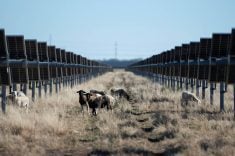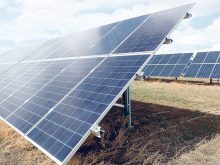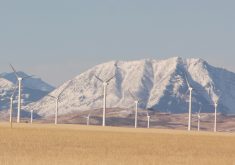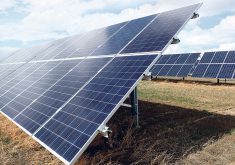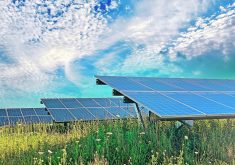Solar projects should first be encouraged for former industrial sites or the roofs of urban buildings before turning to rural farmland, says a conservationist.
The issue is something producers are going to increasingly need to confront as Canada transitions to a low-carbon economy, said Ian Urquhart, executive director of the Alberta Wilderness Association.
“And I think absolutely ranchers and people who are farming, this is a reality they’re going to have to face and try to manage in a way that it doesn’t disrupt their lifestyle and their livelihood, and that’s going to be a challenge.”
Read Also

Phosphate prices to remain high
Phosphate prices are expected to remain elevated, according to Mosaic’s president.
Related story: Solar project location near lake draws alarm
Urquhart pointed to the proposed Saddlebrook Solar and Storage Project near Okotoks, Alta., as an example of the reuse of a former industrial or brownfield site. It is to be built by TC Energy on land in the Saddlebrook Industrial Park in Aldersyde, Alta., that formerly contained a facility to process magnesium.
“TC Energy is looking to reduce our carbon footprint across North America here, and this project is a small part of that as we progress toward a low-carbon future,” said Michael Edwards, project manager, power project development for the company.
Besides 6.5 megawatts from a battery storage system by Lockheed Martin that will be the first of its kind in Alberta, the project will provide 102.5 megawatts of renewable electricity, or enough to power about 30,000 homes, he said.
The expected reduction in carbon emissions of 115,000 tonnes per year will be equivalent to taking about 25,000 cars off the road, he added.
The bulk of the land totals about 413 acres and it already includes an electrical substation left over from the magnesium processing facility, allowing the proposed solar project to connect to Alberta’s electrical grid.
“We’re not building a large amount of transmission lines to get to our project or anything like that.”
About 325 acres will be used for the solar panels, with some of the remaining land to be donated for a training facility for local firefighters. The land under the panels may be used for grazing by animals such as sheep to help control vegetation, said Edwards.
Construction of the solar project is expected to start in May, with the facility becoming operational by the end of this year. It will be located about 13 kilometres northwest of Frank Lake, which is one of the sites in Canada listed under the international Important Bird and Biodiversity Areas Program.
A review by Fish and Wildlife officials at Alberta Environment and Parks determined Saddlebrook presented a low risk to wildlife and their habitats, said Edwards. Meanwhile, the proposed 150-megawatt Foothills Solar Project by Elemental Energy near High River is to be built 1,000 metres from Frank Lake, which the company said meets a minimum distance from named lakes as outlined in a wildlife directive by Alberta Environment and Parks.
The firm is looking at about 1,500 acres zoned for agriculture that have historically been used for farming, said Heather Hemingway, director of planning for Foothills County. Although the impact of solar projects on wildlife is considered by the Alberta Utilities Commission, the regulator doesn’t look at the impact on farming, she added.
Foothills County is “concerned about this type of use taking up significant space in the landscape … the agricultural capacity of the land is a critical issue when considering the siting of commercial-scale solar operations.”
However, the county is largely peripheral to the approval process for the Foothills Solar Project because it is a municipality, said Hemingway.
“The province has removed our authority for a number of uses specific to energy projects, and it’s been that way for a very long time. But certainly, we’re interested in working with the community and working with the proponent to ensure that the process is transparent and properly completed.”
There needs to be stronger leadership from the provincial and federal governments to ensure the better protection of agriculture, said Urquhart.
“Is this going to be more and more of a concern for ranchers and for farmers? Absolutely.”




